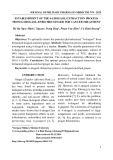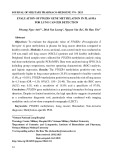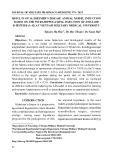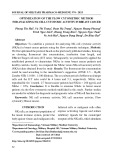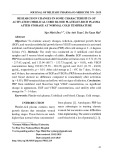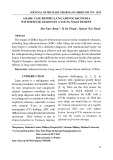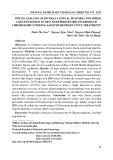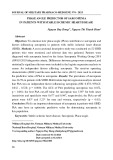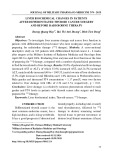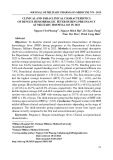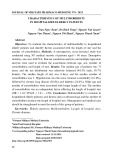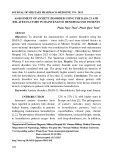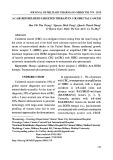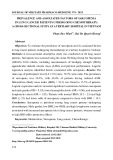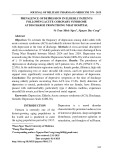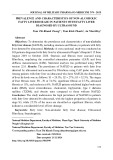
JOURNAL OF MILITARY PHARMACO-MEDICINE N04 - 2025
129
A CASE REPORT: HER2-TARGETED THERAPY IN COLORECTAL CANCER
Dao Thi Thu Trang1, Nguyen Dinh Tung1, Quach Thanh Dung1
Yi Hyeon Gyu2, Dinh Thi Van Anh3, Le Vu Duy4*
Abstracts
Colorectal cancer (CRC) is a malignant tumor arising from the inner lining of
the colon or rectum and is the third most common cancer and the third leading
cause of cancer-related deaths in the United States. Human epidermal growth
factor receptor 2 (HER2) gene overexpressed or amplified CRC has shown
treatment responses with HER2-targeted therapies. This article reports two cases
of heavily pretreated metastatic CRC (mCRC) with HER2 overexpression who
achieved a remarkable clinical response to trastuzumab plus pertuzumab.
Keywords: Human epidermal growth factor receptor 2 (HER2); Anti-HER2
therapy; Trastuzumab plus pertuzumab; Colorectal cancer.
INTRODUCTION
Colorectal cancer constitutes 10% of
global cancer diagnoses and cancer-
related deaths annually. At the time of
diagnosis, 20% of patients have mCRC,
with a 5-year survival rate of less than
20%. Recent advancements in genomic
technology with large-scale molecular
profiling of tumors have led to new
treatment opportunities for these patients.
In approximately 2 - 5% of patients
with CRC, overexpression or amplification
of HER2 is observed, with a higher
incidence in left-sided colon and
primary rectal RAS/BRAF-wild-type
(RAS/BRAFwt) tumors [1, 2, 3].
Currently, patients with left-sided
RAS/BRAFwt tumors are treated with
anti-EGFR therapy (i.e., panitumumab
or cetuximab) with or without combination
chemotherapy and/or anti-VEGF.
1Hematology - Oncology Department, Vinmec Times City International Hospital
2Oncology Center, Vinmec Central Park International Hospital
3Functional Rehabilitation Department, Military Hospital 103, Vietnam Military Medical University
4Radiology Center, Military Hospital 103, Vietnam Military Medical University
*Corresponding author: Le Vu Duy (bsduyvien103@gmail.com)
Date received: 07/01/2025
Date accepted: 27/02/2025
http://doi.org/10.56535/jmpm.v50i4.1178





